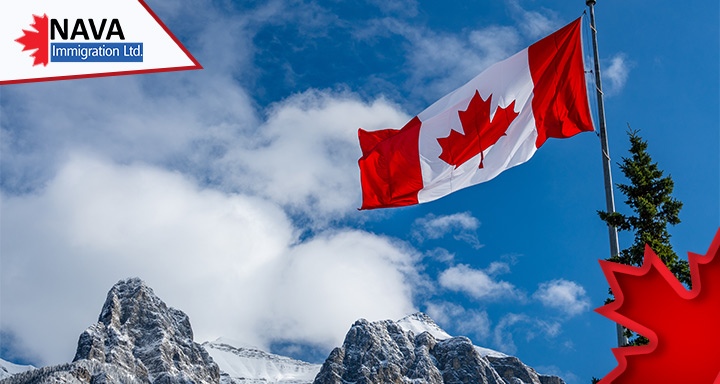Express Entry: A look back to the first half of 2023 and plans for the next six months
The initial six months of 2023 have been significant in the history of Express Entry. It has proven to be unpredictable in certain ways, as it has tried to re-establish itself after a long break because of the COVID-19 pandemic.
Last year in July, after all-program draws were resumed, Express Entry draws took place every two weeks on Wednesday and restarted the pre-pandemic patterns. During that time, the sizes of the draws were raised by predictable increments, whereas the CRS score dropped slightly with each draw. However, after an unexpected six-week pause, 2023 began less predictably.
The first draw of the year occurred on January 11, in which 5,500 candidates were invited. This number was more than the number of candidates invited in any single draw in 2022.
The draw sizes since then have fluctuated, reaching as low as 589 invitations on May 10 and as high as 7,000 invitations in March’s three successive draws.
Total ITAs
IRCC has issued 58,849 Invitations to Apply (ITAs) as of now, in 2023.
Notably, this number is higher than the 35,750 ITAs that were issued between July 6 and November 23 last year.
In January 2023, 11,000 ITAs were issued in two draws, while in February, the IRCC issued only 4,892 ITAs over three draws. March was the notable month for Express Entry, in which IRCC invited the second-highest number of candidates. Over four draws, IRCC issued 21,667 ITAs to candidates. This number was exceeded only in a single draw for permanent residency, with over 27,000 ITAs issued in February 2021.
April and May reflected pre-pandemic patterns. In April, a total of 7,000 candidates were invited over two draws, and 5,389 candidates were invited in May over two draws.
The variation in CRS scores
The minimum required Comprehensive Ranking System Score (CRS score) for 2023 also varied significantly. Notably, the highest required CRS score to date was 791, which was for a PNP-only draw that occurred on February 15, whereas the lowest required CRS score was 476 for the first new category-based draw that occurred on June 28, 2023.
During the last six months, most of the other draws had the lowest CRS score, between 485 and 490.
The fluctuation in the CRS score is probably due to the types of draws.
For instance, a PNP-specific draw has a higher required score compared to others. This is because candidates who receive a provincial nomination receive an additional 600 points, which are added to the CRS score.
Draws Frequency
For Express Entry, IRCC is not obliged to follow a particular schedule. The draws are held per the decision of the immigration minister whenever they feel necessary, and as many candidates as they deem essential.
IRCC followed a new pattern of organizing Express entry draws prior to COVID-19, in which draws were held every two weeks on Wednesday. However, this varied in 2023. In February, three draws were held by the IRCC, of which two draws occurred simultaneously on February 1 and 2, 2023. In March, four draws took place on the 1st, 15th, 22nd, and 29th. Later, IRCC returned to its regular two-week pattern, except for the June 8 draw.
IRCC did not hold a draw, which was planned to occur on June 21. However, it later made up for this by holding two simultaneous draws on 27 and 28 June. The first draw was an all-program draw, and the second draw was for healthcare workers. A total of 4,800 ITAs were issued to candidates in both draws.
Types of Draws in 2023.
IRCC considered candidates from three economic immigration programs in an all-program Express Entry draw, including the Federal Skilled Worker Program, the Canadian Experience Class, and the Federal Skilled Trades Program.
Majorly most draws targeted candidates from all Express Entry managed programs; however, there were four draws for candidates of the Provincial Nominee Program only. The first Federal Skilled Worker Program-only draw took place on February 2, and the first category-based draw took place on June 28.
What’s ahead: Express Entry developments and category-based selections
On May 31, the IRCC revealed that it would start holding new category-based draws later this summer. After a conversation with provincial governments and other notable associates who provided insights into which categories will help Canada’s economy grow, IRCC decided on the new selection categories.
The six new categories were:
- healthcare
- transport
- agriculture and agri-food, or
- trades, such as carpenters, plumbers, and contractors
- science, technology, engineering, and mathematics (STEM) professions
- strong French language proficiency (Candidates should have at least NCLC 7 in reading, writing, listening, & speaking).
Mr. Fraser on June 28 announced that, under the new category-based very first draw, 500 ITAs would be issued for candidates of healthcare professions. He further added that an additional 1,500 candidates would be invited the following week.
On the same day, IRCC revealed that for eligible candidates under the STEM category, the department would hold Express Entry draws for eligible candidates during the first week of July.
In order to attain the target set in the immigration levels plan 2023-2025 for permanent residency, IRCC will work to attain it through the new categories. The new categories are in line with the mission of the immigration minister to strengthen Canada’s labor force through immigration while also increasing francophone immigration outside of Quebec.
Remarkably, in the next six months of 2023, IRCC will need to make efforts toward accomplishing the goal of 2024, which intends to welcome 109,020 new PRs to the country through Express Entry.
The invitations that will be issued by IRCC later in 2023 may not be counted under the 2024 target, as IRCC has a six month service standard to process PR applications under the Express Entry stream.
Other significant improvements that have been made to Canadian immigration are expected to have a notable impact on Express Entry’s future. For example, for H-1B visa holders in the U.S., IRCC is launching a new open work permit on July 16. With this, individuals who have the advantage of getting PR via Express Entry will have the possibility of gaining additional CRS points if they have Canadian work experience.
The goal of welcoming increased H-1B visa holders is a part of the new Tech Talent strategy, which was launched by the Canadian government earlier this week. This new strategy will also provide additional benefits to tech professionals under Express Entry if they come to Canada and work temporarily prior to joining the Express Entry pool. According to the announcement made by the IRCC on June 27, work permit holders will gain additional flexibility to study in Canada. This will enable them to earn extra CRS points for studying in Canada if they undertake an eligible program.





